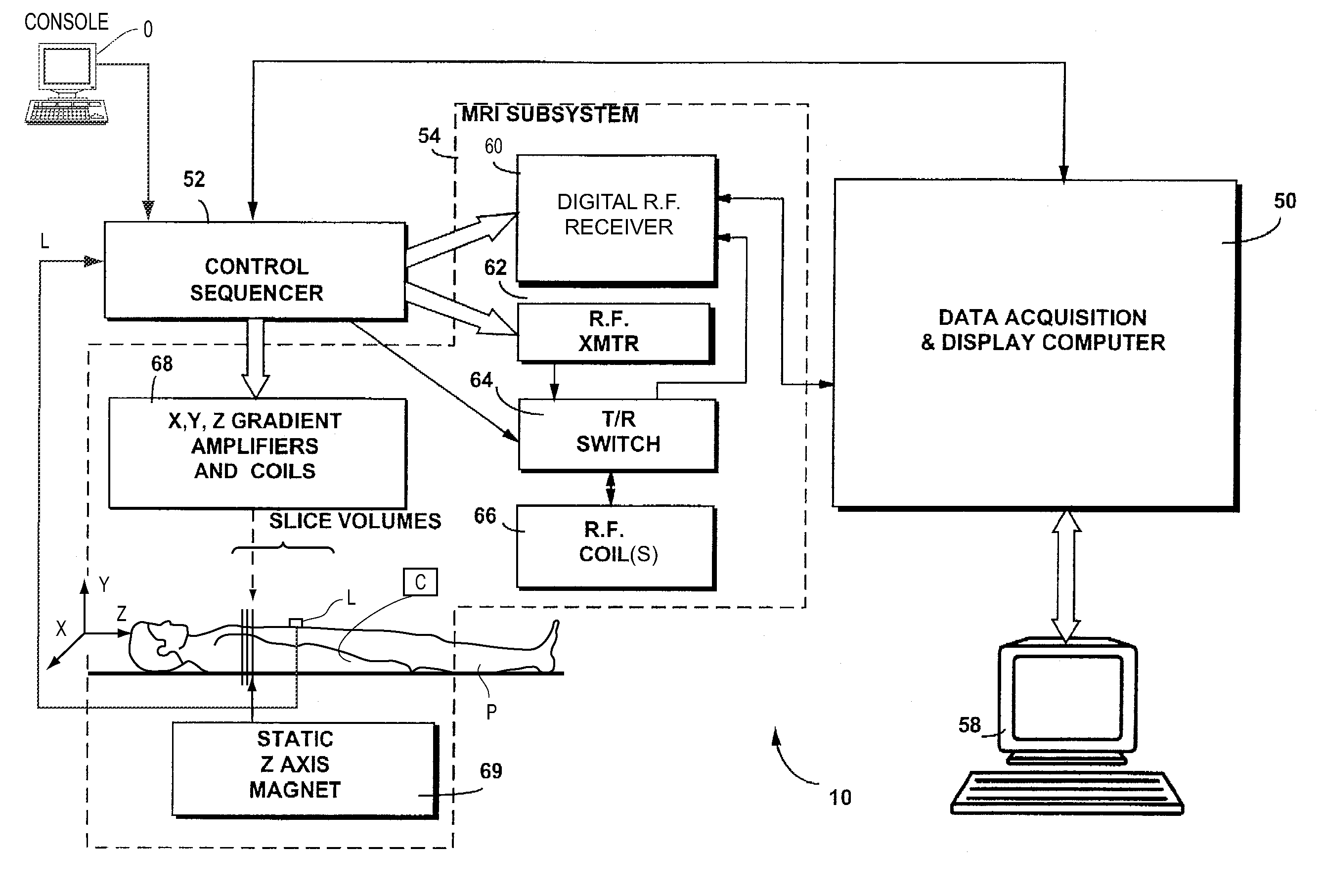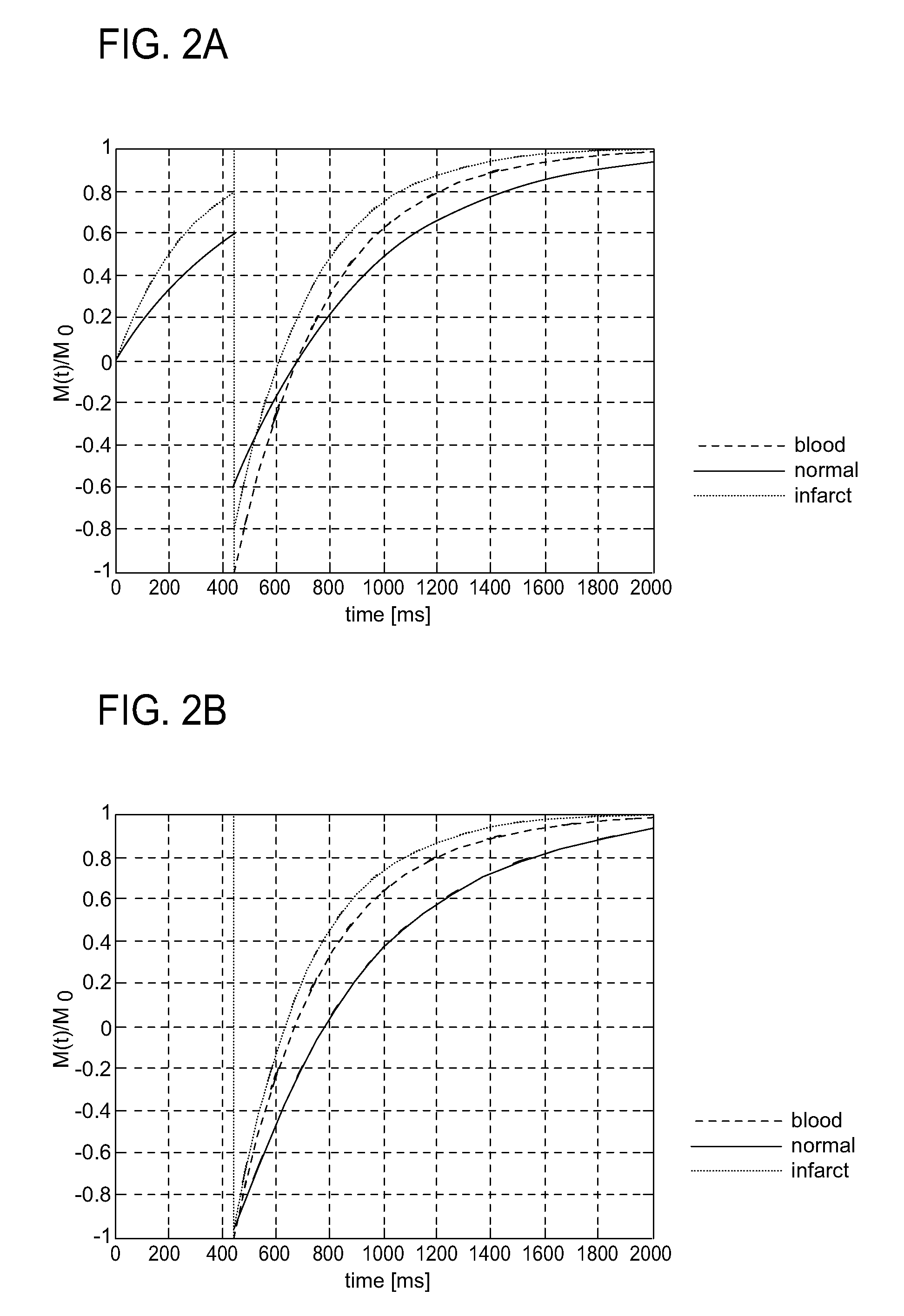Dark blood delayed enhancement magnetic resonance viability imaging techniques for assessing subendocardial infarcts
a technology of magnetic resonance imaging and subendocardial infarction, which is applied in the field of black blood viability magnetic resonance imaging (mri) pulse sequences, can solve the problems of limited clinical use impact of such technology, limitations of ecg, and inutility of biomarkers, and achieve good image contrast and great image contrast
- Summary
- Abstract
- Description
- Claims
- Application Information
AI Technical Summary
Benefits of technology
Problems solved by technology
Method used
Image
Examples
example preparation
Selective Saturation Followed By Non-Selective Inversion
[0067]FIG. 3 shows the magnetization recovery of normal myocardium, infarct, and blood as occurring in an exemplary illustrative non-limiting implementation providing a slice-selective saturation pulse (SS SR) followed by a non-selective inversion. The curves shown are for typical relaxation constants (T1-valued) 10-20 minutes after an administration of a 1.25 mmol / Kg dose of contrast agent. The T1-values used in this and the following simulations are T1 infarct=280 ms, T1 normal=490 ms, and T1 blood=330 ms. These values change as a function of time after contrast agent injection, and modify the timing of the pulses needed to make blood and normal myocardium black.
[0068]In this particular non-limiting illustrative implementation, the slice-selective saturation recovery pulse (SS SR) sets the magnetization of infarct and “normal” to zero. The magnetization of both tissue types recover and is experiencing a non-selective inversio...
example
Non-Selective IR Followed By Timed Classic Double IR
[0083]FIGS. 9 and 10 show additional exemplary illustrative non-limiting implementations providing triple inversion recovery “triple IR” type preparation schemes. The T1-values used in the recovery curves simulations in FIGS. 9 and 10 are T1 infarct=280 ms, T1 normal=490 ms, and T1 blood=330 ms in this particular example.
[0084]In the exemplary illustrative non-implementations shown in FIGS. 9 and 10, a preparation pulse is played at the beginning of the preparation scheme and is later followed by a so-called double-IR preparation. The time between the first preparation and the double-IR preparation is of the essence. The combination of a preparation, an exact time delay, and this classic DIR provides useful results.
[0085]The double-IR preparation is widely used in MRI. We will refer to it as “classic double IR or classic DIR”. This classic DIR preparation consists of a non-selective inversion immediately followed by a slice-selecti...
PUM
 Login to View More
Login to View More Abstract
Description
Claims
Application Information
 Login to View More
Login to View More - R&D
- Intellectual Property
- Life Sciences
- Materials
- Tech Scout
- Unparalleled Data Quality
- Higher Quality Content
- 60% Fewer Hallucinations
Browse by: Latest US Patents, China's latest patents, Technical Efficacy Thesaurus, Application Domain, Technology Topic, Popular Technical Reports.
© 2025 PatSnap. All rights reserved.Legal|Privacy policy|Modern Slavery Act Transparency Statement|Sitemap|About US| Contact US: help@patsnap.com



